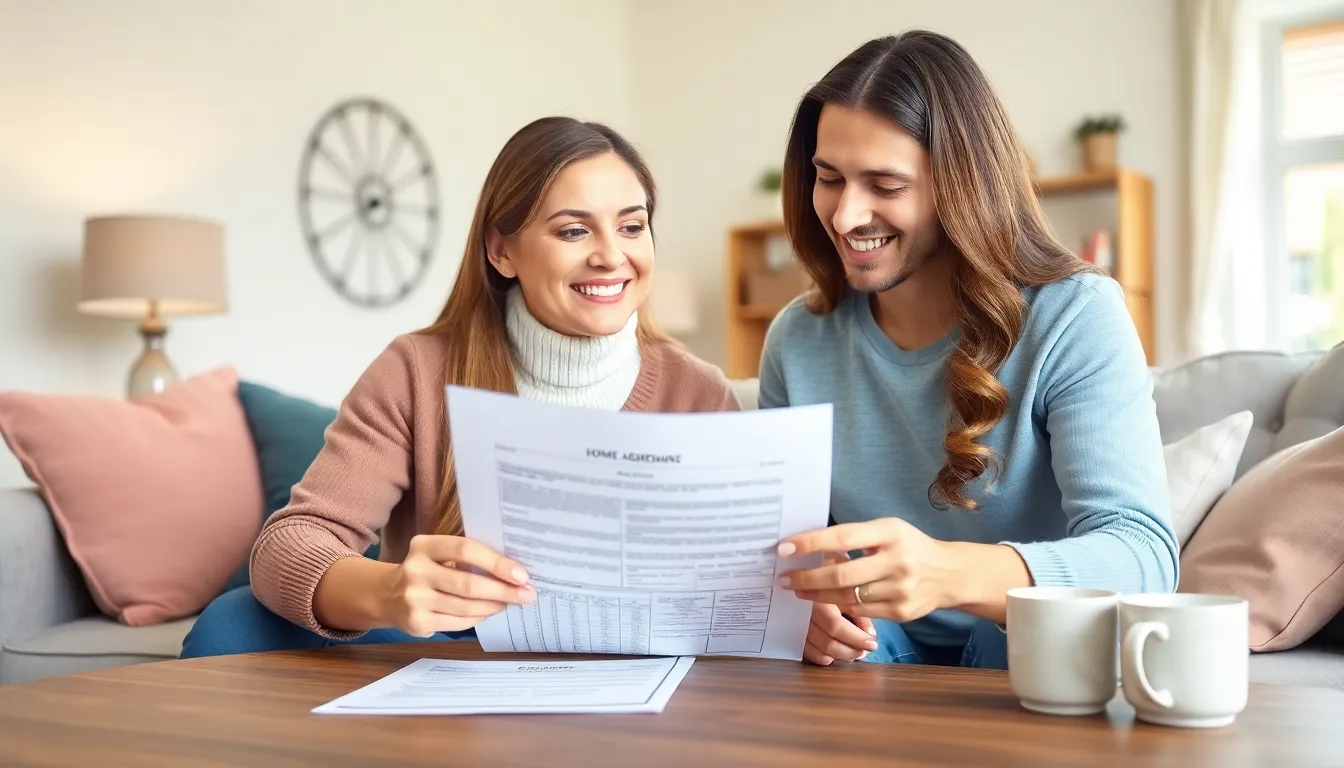Table of Contents
ToggleBuying a home can feel like navigating a maze blindfolded. With so many terms flying around, it’s easy to get lost in the jargon. One common question that pops up is whether closing costs include the down payment. Spoiler alert: they don’t! But don’t worry, he’s here to break it down without putting anyone to sleep.
Understanding Closing Costs
Closing costs represent the fees associated with finalizing a real estate transaction. These costs encompass various expenses, which buyers must settle before officially owning a property.
Definition of Closing Costs
Closing costs consist of all fees and expenses a buyer incurs at the closing of a real estate transaction. These costs do not include the down payment. Closing costs typically range from 2% to 5% of the home’s purchase price, depending on location and specific services needed. Understanding these costs is crucial to budgeting effectively for a home purchase.
Typical Components of Closing Costs
Various components make up closing costs. Items included are loan origination fees, title insurance, appraisal fees, and attorney fees. Additionally, buyers may incur costs for credit reports, underwriting, and recording fees. Inspection and survey fees can also appear in the final tally. Knowing each component helps buyers navigate the financial aspects of home buying.
The Down Payment Explained

A down payment represents a percentage of the home’s purchase price that buyers pay upfront. Typically, this amount ranges from 3% to 20%. For example, on a $300,000 house, a 20% down payment equates to $60,000.
What is a Down Payment?
A down payment serves as an initial payment made toward a home’s purchase. This upfront cost reduces the loan amount needed for financing. Lower down payments can lead to higher monthly mortgage payments, affecting affordability. Certain loans allow for minimal down payments, while others may require higher commitments. Educating oneself about down payment options plays a vital role in homebuying.
Importance of a Down Payment
A down payment carries significant weight in the homebuying process. Making a sizable down payment can lower monthly mortgage payments and overall interest costs. It also demonstrates financial stability and commitment to lenders, potentially leading to better loan terms. Buyers may avoid private mortgage insurance, or PMI, by putting at least 20% down, which results in savings. Thus, understanding the implications and best practices for down payments enhances a buyer’s financial positioning.
Do Closing Costs Include Down Payment?
Closing costs and down payments serve distinct purposes in the homebuying process. Buyers often confuse these costs, yet they encompass different financial responsibilities.
Key Differences Between Closing Costs and Down Payment
Closing costs involve various fees paid at the end of a real estate transaction. These costs typically range from 2% to 5% of the home’s purchase price. In contrast, a down payment is a percentage of the purchase price paid upfront by the buyer. This amount usually falls between 3% and 20%. A down payment reduces the overall loan needed for financing, impacting monthly mortgage payments. Closing costs cover expenses like appraisal fees and title insurance, while the down payment gets applied directly to the home’s purchase price.
Common Misconceptions
Many believe that closing costs include the down payment, which isn’t accurate. The separate nature of these costs can lead to misunderstandings when budgeting. Some buyers also think they can finance closing costs, but lenders often require these fees to be paid upfront. Additionally, confusion persists around down payment amounts; many assume they must pay 20% to avoid private mortgage insurance. In reality, it’s possible to put down a smaller amount. Educating buyers on these aspects is crucial for a smoother homebuying experience.
How to Prepare for Closing Costs and Down Payment
Preparation for closing costs and the down payment is essential for homebuyers. Knowing these costs fosters effective budgeting.
Budgeting for Home Buying
Budgeting for home buying involves understanding the total costs. Buyers should start by calculating the down payment percentage based on the home’s purchase price, typically between 3% and 20%. Next, they must estimate closing costs, which generally range from 2% to 5%. After determining these figures, setting aside funds for additional expenses becomes crucial. Considering a home inspection, appraisal, and moving costs helps create a comprehensive budget. Buyers might also include a buffer for unexpected costs, ensuring a smoother financial transition.
Potential Additional Fees
Potential additional fees can catch buyers off guard. Homebuyers should be aware of various charges that could arise during closing. Title insurance, loan origination fees, and mortgage application fees often contribute to the overall closing costs. Furthermore, appraisal costs and inspection fees are common elements of these expenses. Processing fees for credit reports might also be necessary. To prepare, piece together a list of possible charges specific to the local market. Understanding these fees ahead of time allows buyers to allocate sufficient funds, preventing last-minute financial surprises.
Understanding the distinction between closing costs and down payments is essential for any homebuyer. By recognizing that closing costs are separate fees incurred at the end of a real estate transaction and that down payments represent an upfront investment in the home, buyers can better navigate the financial aspects of purchasing a property.
Effective budgeting for both closing costs and down payments ensures a smoother homebuying experience. Being well-informed about these expenses allows buyers to prepare adequately and avoid unexpected financial burdens. With the right knowledge and preparation, they can approach their home purchase with confidence.



